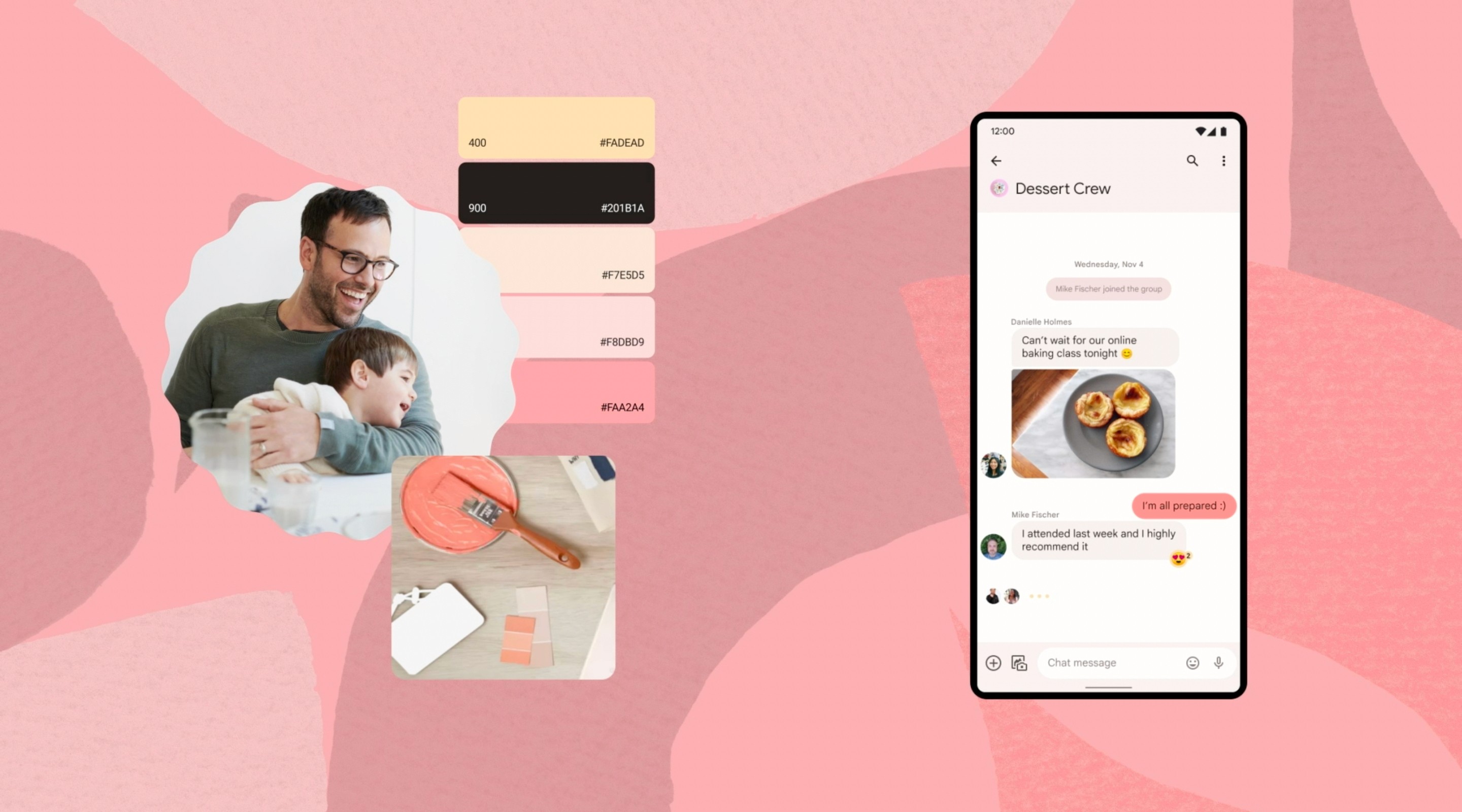Internship • Summer 2022
As a UX Design Intern on the Android Color Team at Google, I was tasked with completely redesigning an Monet Studio, an internal tool focused on allowing designers to understand, experience, and utilize dynamic color as a part of the Material You system.
Web Design • User Experience • Interaction Design • Design System
BACKGROUND
The Android Color Team at Google is responsible for working on the dynamic color system associated with Android / Pixel devices. In the past year or so, Android released Material You, a groundbreaking feature on Android devices where colors are extracted from the user's wallpaper and used to formulate different custom color schemes for the user interface. My team plays a critical role in the development of this feature and the internal tool I redesigned is essential in crafting these color mappings.
Unfortunately because the tool I redesigned was internal and protected via an NDA, I cannot show most of my work. What I've included below is the process behind my work as well as the impact of my work.
Role
UX Designer Intern
Methods
Semi-structured Interviews
Wireframing
Prototyping
Tools
Figma
Hosts
Matt Adams
Ashley Park
Team
Android Color
INTERNSHIP FLOW
This was the overall flow of my internship. My primary project involved multiple stages of research and design that bleeded into each other as well as contributing to a design sprint for the next Android and an overarching Android UX summit. In addition, towards the end of my internship, I hosted a design jam for Android designers across international timezones to facilitate color pairing exploration (more below on this). At the end of my internship, I presented my entire redesign and process to designers, engineers, and product managers all across Android.
MONET STUDIO
Used internally on my team and adjacent design teams, Monet Studio was initially built to help designers experiment with color — from extracting colors from wallpapers to testing contrast ratios to generating palettes and recipes and so much more. While Monet's functionality was extensive, with over 30 color tools, it's design had outgrown its interface. Each tool was built ad hoc, meaning that little to no time was given to its own UX, now creating a huge learning curve for designers wanting to use any tool in Monet. Monet had become so intimidating and overwhelming to designers that its tools were sitting idle, despite their extensive value and power.
This was where I came in. My mission was to completely reimagine Monet Studio. To create a design tool that designers could actually use.
USER RESEARCH
REFLECTION
Google was always a pipe dream for me. Having used their ecosystem ever since I was able to log onto the internet, my understanding of what good UX and UI is, was largely shaped by Google and its groundbreaking visionaries of designers.
When I met Matt and got assigned this project, it was the culmination of all that I had worked for. I had been given complete creative control and independence in revamping an existing internal tool. It was a large and significant project with the potential to impact designers across Android. I went through a long process of research and iterative design with numerous critiques to get to a final product that not only I was proud of, but that was highly regarded by the designers that had inspired me from the very beginning.
I've been asked the same question by a lot of interviewers — "What is your favorite part of UX Design? Why do you do it?" — and I've always given the same answer. UX Design is about translating thoughts, feelings, experiences into an interaction. It's turning something abstract into something concrete. It's problem solving. I love the idea of being able to have an impact on a user by making their experiences and interactions seamless. With this project, I was really able to tap into this. I was given the opportunity to interview designers, capture their pain points, their needs, their aspirations, and translate it into a visual experience. To make their lives easier.



